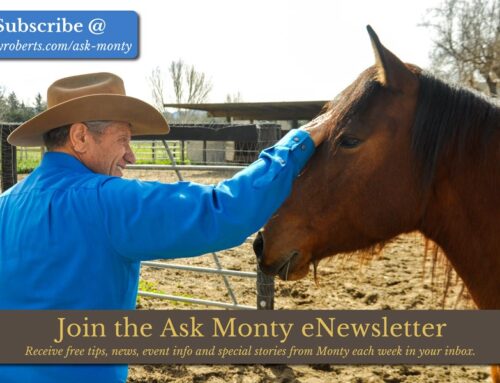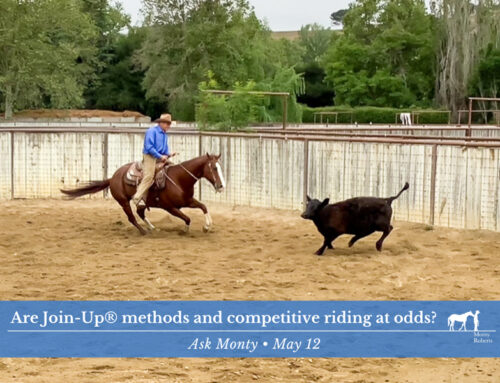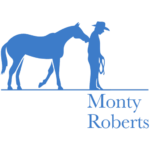May 6, 2020 – Ask Monty Newsletter
Question: How do you ride a bucking horse?
I think there may be a few over-fresh horses coming out at the end of lockdown, with riders who will be challenged to sit a buck. I’d love to get some advice from you on the “staying on” part. I think I can sit a buck pretty well as riding racehorses taught me to grip with my ankles. There are many roads to Rome though. How does your dressage-trained rider stay on for a rodeo? Would you have some words of wisdom on this please.
Kelly Marks, Monty Roberts Certified Instructor
IntelligentHorsemanship.co.uk
Monty’s Answer:
Dear Kelly,
Isn’t it coincidental I was planning to ride Chrome today so I could school a particular Thoroughbred to respond to the Dually Halter while being led from another horse. Since Chrome has had an uneventful month or so, I was wondering what to do with him because he will tend to buck when he is fresh. I think your idea is a good one and should be valuable to horsemen worldwide. To my way of thinking, the most important part of these ‘fresh horse’ rides is what you do before you get on.
Prior to putting yourself in the saddle, there is very little chance of being injured by a fresh horse. Once you have a leg on each side of him, you belong to him. The fresh horse can buck you off even if he is the kindest character you could ever imagine.
It is what Equus is. Equus represents a flight animal with a world of energy and a deep temptation to buck and play, especially when fresh. Whether the bucking is entertainment for the horse or a serious attempt to get one off of his back, injuries occur under either of those conditions. Before I get on Chrome today, I intend to first put him in a turn out to ’stretch his legs’ and then have him saddled and released once again in a safe enclosure, watching that he doesn’t roll.
While I have round pens, any small enclosure with good fencing and reasonable footing will do. I have some rectangular ‘turn outs’ on our farm which are about 20 by 40 meters (20 x 40 yards). I have used these with Chrome before and found him to be very prone to buck, run and play for four or five minutes. After about four or five more minutes, with no bucking, I then feel safe to mount.
There was a time in my life when I would simply saddle a horse of this description and get straight on. I found it to be fun to have some bucking and playing under me. Remember, I spent two years riding bulls in professional rodeo. Do not fall into this same category. There is no fun in wearing a cast and it is not right to subject your horse to being listed as another horse who caused an injury.
It isn’t fair to the species and we should show them far more responsibility than my former actions would express. Injuries are not fun to horses or humans; if you have followed my techniques from the beginning with your horse, I would suggest to even resort to the long lining experienced in the early stages of the process of training the horse one now rides for pleasure.
Somewhere in my eight books I suggested that one of the ‘Golden Rules’ of good horsemanship is to print with a bold red marker on a piece of paper, ‘SAFETY FIRST.’ Place one of these reminders in your tack room, another in your feed room, one in your car and one more on the refrigerator that you visit several times a day. The lack of attention to safety has caused more people to give up on horses because of irresponsible accidents or even just the fear of having an accident because of the dangerous behavior of the horse involved.
People tend not to admit that they gave up their horse interests because of fear. The fact is, however, a huge percentage of those who do give up their horses are doing so, at least in part, by a fright they received.
Sincerely,

Read the full newsletter: How do you ride a bucking horse?




